What is E-A-T? It’s no secret that search engine optimisation is crucial for businesses looking to gain an online presence. And while there are many factors to consider when it comes to SEO, one of the most important is E-A-T, or “Expertise, Authority and Trust.”
In this post, we’ll look at E-A-T and how you can optimise your website accordingly.
What does E-A-T mean?
E-A-T is one of Google’s most important factors when ranking websites. This is because they want to ensure that their users get the best possible results and that the content they’re displaying is high quality.
It serves as a guideline for businesses to provide the best possible information to their users. And while many factors contribute to E-A-T, there are three main ones that we want to focus on in this post:
Expertise: This is how knowledgeable a business is about the topic they’re writing about.
Authority: This is how credible a business is.
Trustworthiness: This is how much users trust a business to provide information.
A high-quality page will meet all three factors, while a low-quality page will address few to none.
What are Search Quality Evaluator Guidelines?
Search Quality Evaluator Guidelines are Google’s instructions for how its search engine ranks pages. The guidelines are updated often, and they’re one of the most important documents to read if you’re trying to improve your website’s ranking.

The guidelines are long and detailed, but we’ll give you the gist so you won’t be left behind. If you’re running a website, it’s essential to ensure that it meets Google’s E-A-T guidelines.
But what does that actually mean? And how can you make sure your website is up to scratch? In this article, we’ll look at E-A-T and how you can ensure your website meets Google’s standards.
E-A-T is a term coined by Google to describe the factors they use to determine the quality of a website. In short, it’s all about ensuring that your website is credible and trustworthy.
Here are some factors that Google takes into account when determining E-A-T:
1. The quality of the content on your website.
2. The design and layout of your website.
3. The authority of the people who write for your website.
4. The trustworthiness of your website.
5. The number of positive reviews your website has received.
6. How up-to-date your website is
Meeting these is necessary if you want your website to rank well on Google. In fact, if your website doesn’t meet these guidelines, your website will likely be penalised.
How to Improve Your E-A-T?
Now that we’ve looked at E-A-T let’s look at some ways to improve it on your website.
There are many ways you can improve your E-A-T, but we’ll focus on three main ones:
1. Build up your website’s authority and trustworthiness.
To improve your E, A, and T, you’ll need to focus on building up your website’s authority and trustworthiness. This can be done by creating high-quality content relevant to your target audience and building relationships with other reputable websites.
2. Ensure your website is mobile-friendly and easy to use.
You can also increase your E-A-T score by ensuring that your website is mobile-friendly and easy to use. It means that your website will be easy to navigate on mobile devices, and your content will be easy to read and digest.
3. Make sure your website is up-to-date and error-free.
Make sure that your website is up-to-date and error-free. This will help to ensure that your website is credible and trustworthy.
Build proper backlinks with off-page SEO.

All the backlinks that point to your website should be high quality and relevant. Your backlinks serve as the backbone of search engine optimization. Additionally, this is one of the best ways to demonstrate your E-A-T.
To build proper backlinks, you need to consistently create valuable, high-quality content that people want to link to. That said, you need to invest time and resources to help put your brand out there as an authority. From there, you can establish relationships with the right people. Eventually, high-quality backlinks will come pouring in.
Get more mentions from trusted sources.
Another effective way to boost your E-A-T is to get mentions from trusted sources. Why?
The more people see your brand name in these trusted sources online, the more Google will see you as an authority.
In fact, according to a Google Patent, “implied links” within the text that mentions a brand name can be viewed as a type of backlink. This is because the patent will identify incoming links as express links, implied links, or both. Additionally, it clarifies that they can be actual links or plain text.
That said, all links that come from trusted websites are counted toward the quality of the website. So, how do you get those mentions to keep on coming?
Lucky for you, there are so many ways to do it:
– Guest posting on trusted and highly authoritative websites
– Get interview opportunities
– Be part of podcasts
– Create partnerships with influencers
– Speak at or host events
– Create high-value resources
– Launch new innovations
Get more reviews
Online reviews are a gold mine for businesses today. Reviews help build your website’s E-A-T as they can demonstrate that your brand is trustworthy. This is why you must encourage your customers to leave reviews on your website.
And make sure that you respond to them, even the not-so-good ones. Responding to feedback will improve your trustworthiness as a reputable brand. It will also show that you are committed to keeping your customers happy.
In addition to that, you need to be mindful of the product reviews update, which aims to promote review content that is comprehensive, detailed and accurate. According to Google, it will encourage these enhanced types of product reviews.
Work with experts

If there’s one thing that Google loves, that is expert content. It has been observed in the past years that the search engine rewards content created by someone with credentials or qualifications.
If your site falls into the YMYL category, then you definitely need to work on expert materials. Doing so can improve your site’s E-A-T.
Tap into the experts in your industry, don’t just hire a copywriter who can write about the topic. You want someone with actual experience in the field. That way, the content will be more valuable, and your expertise will shine.
Show off your credentials
If you are going to improve your E-A-T, then this is your chance to flaunt what you have. Don’t just refer to people as “professionals” without anything to back it up.
Before you post anything on your website, you need to verify their credentials and include them on your site alongside the content they produce. It is also a smart move to link to the authors’ websites and social media profiles, as this will help Google understand the entities behind the content.
It is also a great idea to have a list of your experts on pages that describe the people behind the site. You can do this via the About page or Team page.
Have a Wikipedia Page
This may not be something you have thought about, but having a Wikipedia page can be greatly beneficial for businesses big and small. One is because it has a rigorous editorial process, which means when you get a backlink from them to your site, it is definitely a good thing.
Also, you can take advantage of your Wikipedia page as it’s a credible place to establish your brand as an authority in your niche.
Conduct a content audit
If you already have existing content, then it only makes sense to perform a content audit. Doing so will help ensure that everything you published meets E-A-T standards.
Auditing your content enables you to analyse the breadth of the content you have on your site. It will let you gain insights into things you need to do to improve your content. From here, you can determine what content must be updated, strengthened, merged or deleted. However, some content should be left as is.
Take it easy on the ads

Having ads on your website is good, but don’t overdo it. If you have an overwhelming number of ads, especially ones that can compromise the reading experience, then you might want to take it easy.
When you have too many ads on your website, it can make it appear untrustworthy and biased. Readers may even assume that everything on that page is sponsored or compensated. It could result in a disaster that will leave you with fewer customers.
If you can focus on improving these three areas, you’ll be well on your way to increasing your E-A-T score and improving your website’s SEO.
E-A-T Myths
With so much information on Google E-A-T, there is already so much misinformation out there that could compromise your strategies. Here are the most common ones:
Google Tests Your Site’s E-A-T
This is a common misconception about Google’s E-A-T. The truth is, their bots will never test your site’s E-A-T. Instead, the search engine will rely on their search quality guidelines.
E-A-T Was Introduced to Rank High-Quality Websites
No, this isn’t true. Instead, the concept of E-A-T is to help Google’s evaluation determine site quality. Additionally, it is not designed to improve organic rankings. What it does is provide valuable site information to Google.
E-A-T is a Direct Ranking Factor
E-A-T is not a direct ranking factor, unlike what many people think will have a significant impact on their organic rankings. The reality is, it’s not going to help organic rankings because, again, it’s about evaluating the site quality with quality raters.
It’s an Algorithm
No, E-A-T is not an algorithm. It is a collection of tiny algorithms that work together to generate the ranking factor. A lot of these tiny algorithms search for signals in content or pages.
Therefore, it’s not an algorithm; instead, multiple algorithms conceptualise E-A-T.
Every Website Should Meet E-A-T Standards
Not necessarily. This is because it depends on the type of site you have and the type of content you create. In this case, YMYL websites and topics that we mentioned above should prioritise meeting E-A-T standards.
Why?
YMYL websites impact the readers’ happiness, financial success, health or well-being directly. Also, if your website doesn’t fall under the YMYL category, then it would also be nice to try to meet the E-A-T standards, but it is not required.
Truths about Google E-A-T

There’s a lot of buzz around Google E-A-T lately. Many people are wondering what it is and how it affects their website.
Here are some truths about Google E-A-T:
1. Expertise is key.
Google wants to see that you are an expert in your field. They will look at your website and its content to determine if you are an authority on the topic.
2. Authority is important, too.
In addition to being an expert, you must also be an authority in your field. This means that your website must have high-quality content that is well-researched and authoritative.
3. Trust is essential.
Finally, Google wants to see that you are trustworthy. They will look at things such as your website’s age, its domain authority, and the number of quality backlinks it has.
If you can meet these requirements, you will be in good shape for Google E-A-T. If you are struggling in these areas, don’t worry – there are things you can do to improve your score. For example, you can improve your website’s content or get more high-quality backlinks. By following these tips, you can ensure your website is optimised for Google E-A-T.
What is YMYL?
YMYL stands for “Your Money or Your Life.” This acronym is used by Google as a guiding principle for classifying pages that impact your health, finances, safety, and happiness.
Therefore, YMYL sites should meet the highest E-A-T standards because of its subject matter and what it means for a user if that information is not presented well.
There are different types of YMYL websites:
– News and current events: These cover international events, business, politics, science, technology, etc. Keep in mind that not all news content falls under YMYL, for example, entertainment and sports.
– Civics, government, law: This involves the dissemination of information that pertains to voting, government agencies, public institutions, legal advice or social services.
– Finance: This involves any financial advice or information about taxes, investments, retirement planning, loans, insurance, or banking.
– Shopping: This involves eCommerce content, such as product research.
– Health and safety: This involves content that contains information or advice on health and medical issues.
– Groups: This involves content that contains information or claims about people based on ethnicity, race, nationality, age, disability, religion, gender, sexual orientation, etc.
The Key to Google E-A-T
As you know, E-A-T is one of the most critical factors in Google’s ranking algorithm. One of the things you can do is ensure that you have high-quality, well-researched content. Users should feel safe giving you their personal information or buying products from you.

But, E-A-T is about more than just content; it’s also about the overall user experience on your website. Ensure your site is easy to navigate and that all your links work properly.
Be sure to test your site on different devices and make sure it looks good on mobile and desktop.
Finally, you need to ensure that you are an authoritative source of information. Google wants to see that you are an expert in your field and provide accurate information to your users.
Ensuring that your site meets the E-A-T principles is essential for improving your ranking on Google. By following the guidelines above, you can ensure that your site is fully optimised for E-A-T.
E-A-T Updates
Since Google released the Quality Rater Guidelines in August 2018, there’s been a lot of discussion about E-A-T and how it impacts SEO.
E-A-T is one of the factors that Google uses to determine how well a page ranks in search results. With the ranking factor increasingly important, it’s crucial to understand what E-A-T is and how to improve your website’s E-A-T.
Conclusion
While E-A-T has always been important, it’s now more crucial than ever to make sure your website is optimised for it. It’s essential always to keep your users in mind when making changes to your website. Ensure that your site is easy to navigate and provides accurate and reliable information. Following these guidelines can improve your E-A-T and enhance your ranking on Google.
If you’re looking to improve your E-A-T score, Evolving Digital can help you develop a strategy that will help you increase your website’s ranking and improve your overall SEO.
FAQS
Why is E-A-T important?
E-A-T is essential for two main reasons: firstly, it helps ensure that your website provides a good user experience and secondly, it can help improve your website’s search engine ranking.
Why does user experience matter?
User experience is critical when it comes to website design. If your website isn’t user-friendly, people will quickly click away, resulting in a high bounce rate. This can harm your website’s ranking, as Google considers how user-friendly a website is when ranking it.
What affects user experience?
Several factors can affect a user’s experience on your website, including the layout, design, speed and functionality. All of these elements need to be considered when designing your website.
How can E-A-T help with SEO?
E-A-T is also important for SEO, as it can help improve your website’s ranking. Google considers some factors when ranking a website, including its E-A-T score.
A high E-A-T score indicates that your website provides a good user experience and is trustworthy. This can help improve your website’s ranking, as Google favours websites with a good user experience.
E-A-T is just one factor that Google considers when ranking a website, and it’s not the only thing that determines your website’s ranking. However, it is still an essential factor to consider.







